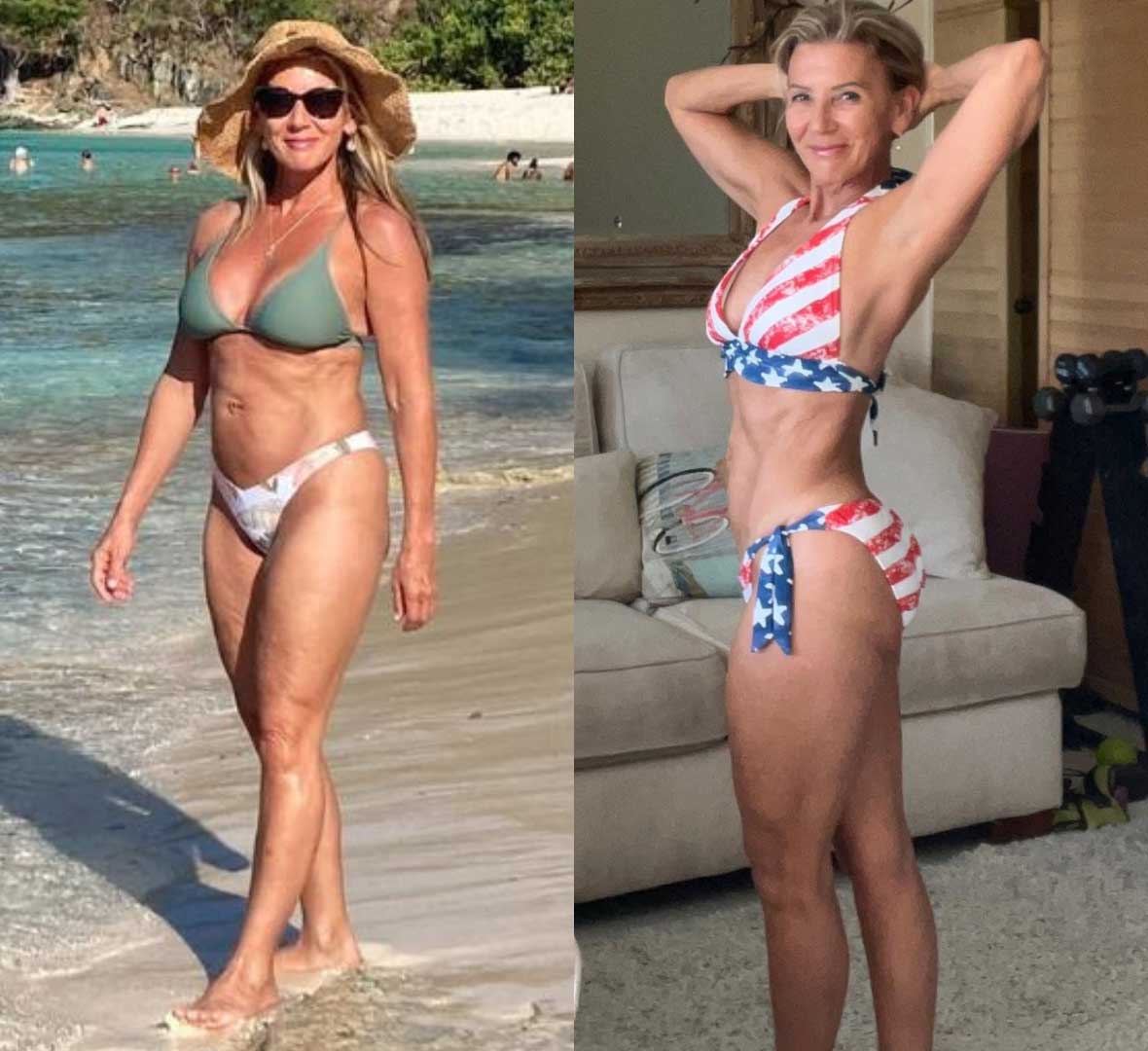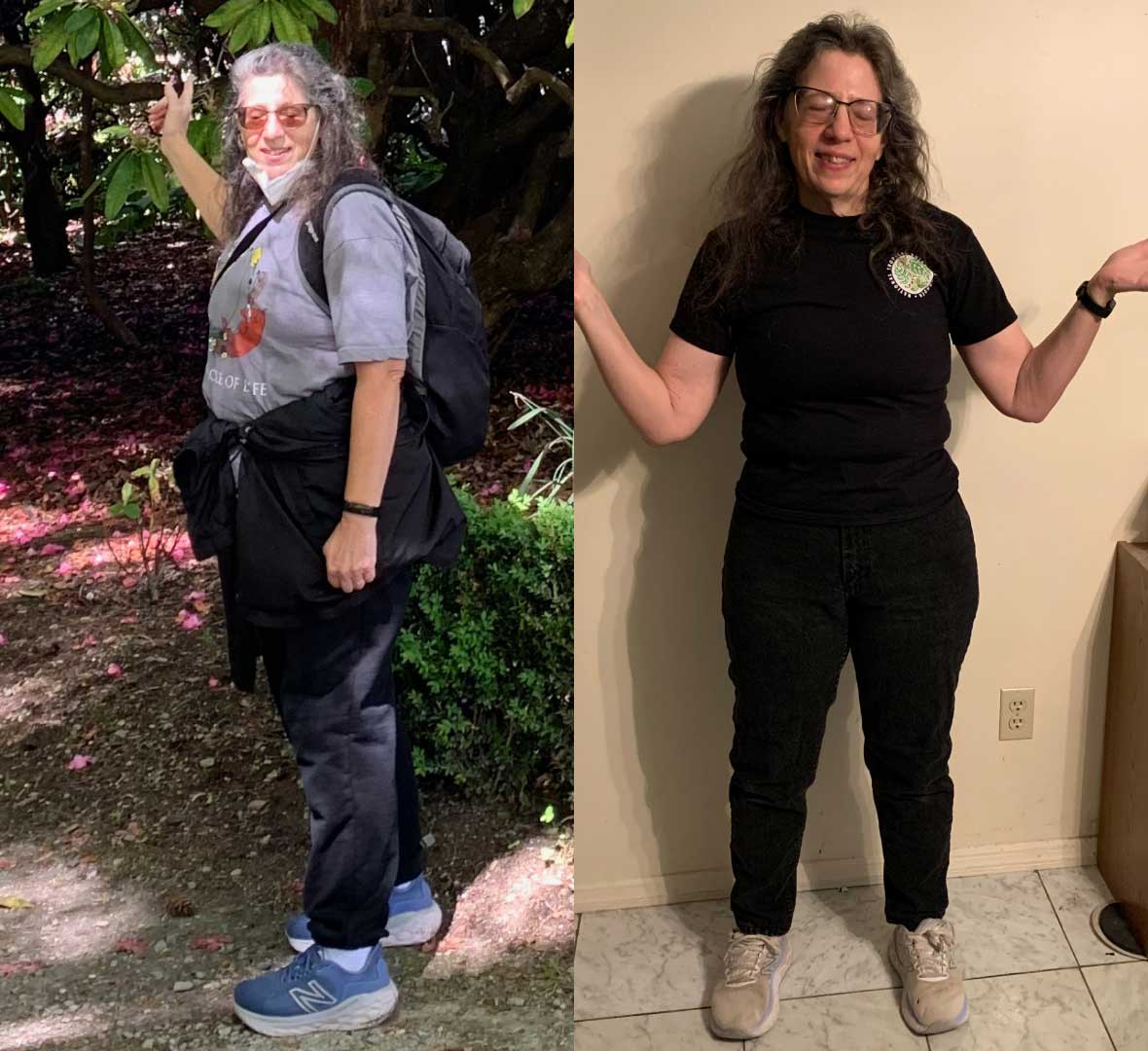You might have felt a little pang of fear when you read “reduce your salt intake.” Maybe you had some resistance to the idea. But you clicked anyway because you know it’s in your best interest to reduce sodium in your diet, and you’re hoping I can help you do that relatively painlessly. I do have some ideas for you! And I have some good news.
First of all, don’t feel bad for liking salt so much. Humans have always loved the unique flavor-enhancing quality of salt. In fact, the word salary comes from the word salt because it used to be so precious that ancient people used it as currency. (1)
Secondly, our bodies do need some sodium to stay in balance. There’s a natural ratio of sodium to water in our internal systems, which is easily disrupted by not adhering to a low sodium diet.
So, it’s not a bad thing as a whole. But like with most good things, too much of it can be harmful.
In this post I’ll show you:
- How too much salt can make you puffy and bloated
- Where excess salt is sneaking in from
- Checklist for reducing your salt intake (without missing out on flavor)
- Restaurant hacks for reducing your salt intake
- Health problems (high blood pressure, heart and kidney issues) with too much salt and how to counteract these problems
Reduce salt intake to avoid these health problems
You may have noticed that some days you feel puffy, bloated in your face, around your eyes, and in your hands. Maybe one day your ring fits just fine, and the next day you have trouble slipping it on and off your finger.
Of course, there are always things changing in your body. Things fluctuate from one day to the next. But pay attention to whether your eyes and fingers seem puffier the day after you’ve had salty food. You could be retaining water because of eating too much sodium. (2)
Because your body tries to keep a balance of sodium and water, if you go overboard on the salt, your body will go overboard on the water to strike that balance.

But water weight isn’t the only reason you might want to reduce your salt intake. Too much sodium is a major contributor to high blood pressure, which is the leading cause of kidney failure. (3)
High blood pressure is also linked to heart attack (the number one killer in the U.S.) and stroke. (4) These diseases are mostly preventable! And reducing your salt intake is one of the best things to do to prevent them.
21 anti-inflammatory foods to free you of achiness and extra weight + eliminate disease Crock Pot Chicken Tikka Masala + 6 Other MUST-TRY Healthy Crock Pot Meals Not sure if you’re eating too much salt? Here are a few signs that you might be. (2) About 75% of the sodium we eat comes in the sneaky form of sodium added to processed and restaurant foods. (4) The biggest sources of sodium in the grocery store are hiding in the middle aisles. Packaged pre-made food and processed or boxed foods are the most likely to be high in sodium. Get in the habit of always looking at food labels for the sodium content. Low-sodium foods have less than 140 mg per serving. (4) Overall, the Center for Disease Control guidelines say 1500 mgs of sodium per day is ideal, especially if you have heart trouble or high blood pressure. For people with a healthy blood pressure level, 2300 mgs should be the maximum amount. Read more about the daily recommended salt intake and how to eat a low sodium diet here. Here’s an excellent checklist for how to reduce your salt intake every day from Everyday Health. (4) Many people think that reducing salt will leave them with bland-tasting food. This is NOT true. Your taste buds will adjust to having less salt, and very salty foods won’t even taste good anymore. (5) Plus, your food will burst with flavor if you cook using the right fresh ingredients. And It doesn’t have to be complicated. In addition to cooking with onions, garlic, herbs and spices, try also adding citrus juices and vinegars. These are smart, easy ways to add flavor without needing salt. (5) Condiments can be high in sodium, but we might not even think about them as “counting.” Premade dressings and sauces are the biggest culprits for high condiments high in sodium. Drizzle these lower sodium accents onto salad, marinate some veggies to roast in the oven, add them to bean and lentil dishes or meat dishes for maximum flavor and minimum sodium. Cooking your own spicy, bloat-busting foods at home is the best way to be sure you’re in control of your salt intake. But obviously, there will be times when you have to eat out. Maybe you have to travel for work, attend conferences, or go even when you go on a vacation with your family, you won’t always be able to cook your own food. Here are some guidelines on what to order (or modifications to ask for) at restaurants so that you don’t overdose on sodium. (5) When you place your order, ask if the dish can be prepared without salt. Most restaurants try to be accommodating, especially with more and more people dealing with food allergies. You can explain that you’re watching your blood pressure, or salt sodium intake. More than likely the waiter and chef will be happy to spare you a hefty dash of salt, but they won’t know what you want unless you ask for it. Another really easy restaurant hack to reduce your salt intake is to ask your waiter for a slice of lemon with your meal or when you order your drink. A nice squeeze of lemon juice is refreshing and lifts the flavor of almost any dish. It’s especially great with fish and veggies. You might be in the habit of reaching for the salt shaker, but try to be aware of this and take a bite of your food first. It might already have enough salt, or if the flavor could be boosted, use salt’s best companion, black pepper, instead. Black pepper adds a nice burst of taste, and can actually help boost fat-burning as much as a 20-minute walk. Double bonus! Some ways of preparing food makes it extra salty. When you’re out to eat, avoid dishes describes as: pickled, brined, barbecued, cured, smoked, with broth, au jus, with soy sauce, miso or teriyaki sauce. Look for these food prep styles Foods that are lower in salt tend to be steamed, baked, grilled, poached or roasted. Restaurant food is usually sold in larger portions than you would ever eat at home. This is part of why it’s easy to get too much salt when eating out. Ask if there’s a half order option for what you want. If not, only eat half of the meal and save the rest in a to-go box for later. Another option is to ask someone if they’d like to split the dish with you. Get a spare plate from the waiter and you each doll out what you need. Two meals with half the sodium, half the calories, and half the price! As you get older, your body is more sensitive to salt and the more important it is to watch your blood pressure and salt intake. But there’s great news! Getting older and more sensitive also means your body self-corrects its high blood pressure more easily when you cut back on sodium. (7) When you make an effort to reduce salt intake, your body notices and starts to undo the damage almost immediately. Potassium also helps counter the effects of sodium, and can even help lower your blood pressure. (5) Spicy chili recipe to cool off + burn fat cells Easy Spicy VEGETARIAN One-Week Meal Plan Crock Pot Chili Recipe Packed With Anti-inflammatory Ingredients Have you found any good low sodium brands you love? Which fresh foods do you enjoy to reduce sodium intake? Let me know in the comments!Signs you’re eating more salt than you realize
Salt leaks (where the salt is sneaking in from)
Reduce your salt intake, but don’t miss out on flavor
Here’s a list of yummy low sodium condiments from Web MD to help you reduce salt intake while enjoying flavor (6)
Reduce salt intake at restaurants
Restaurant hacks guide to reduce salt intake
Just ask!
Ask for lemon
Don’t grab the salt shaker too quickly
Steer clear of these food prep styles
Ask for half orders
Good news about when you reduce your salt intake
Here’s a list flavorful, healthy foods with potassium from the American Heart Association. (5)
































Reader Interactions